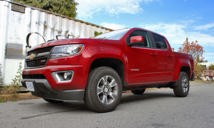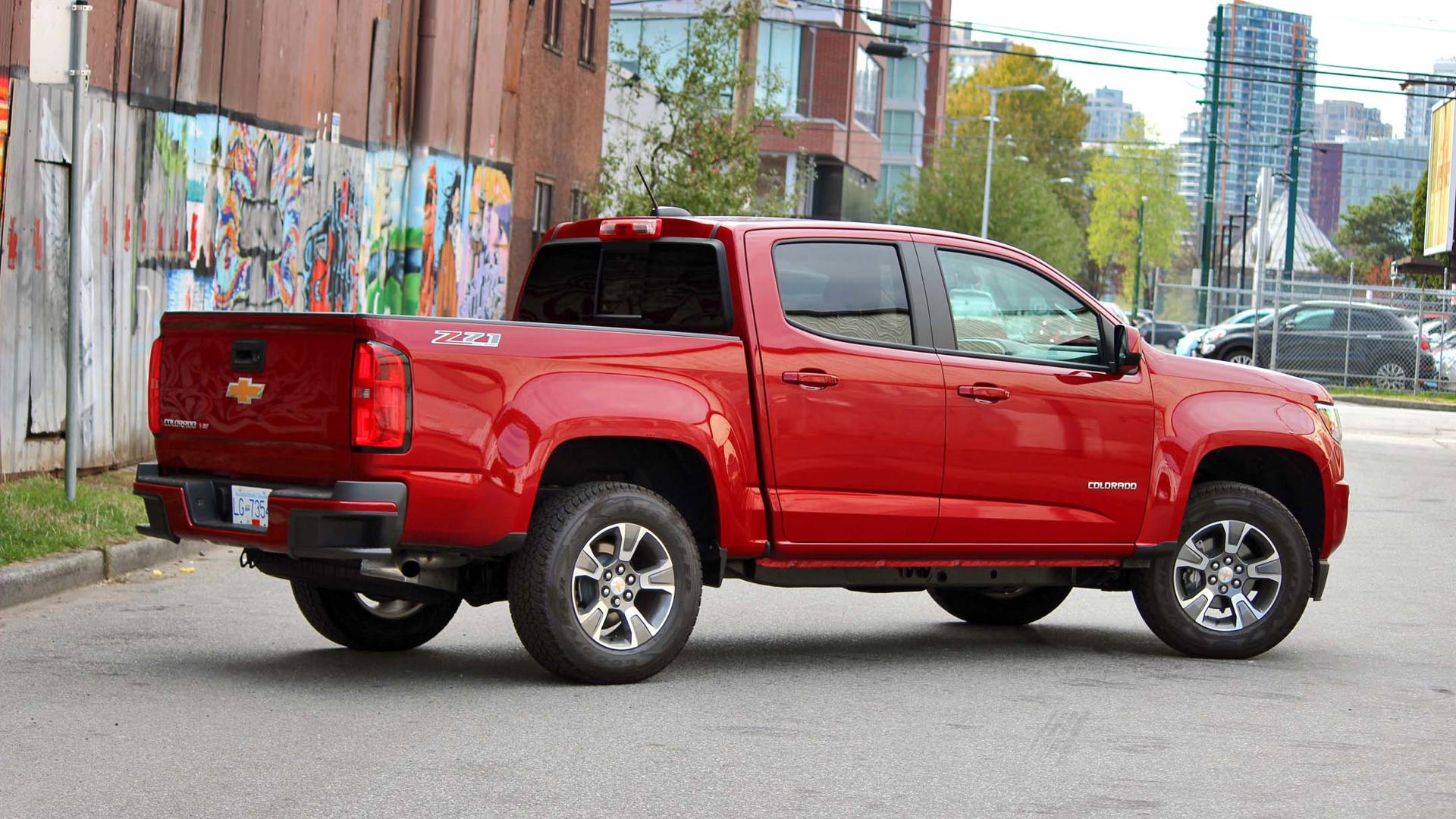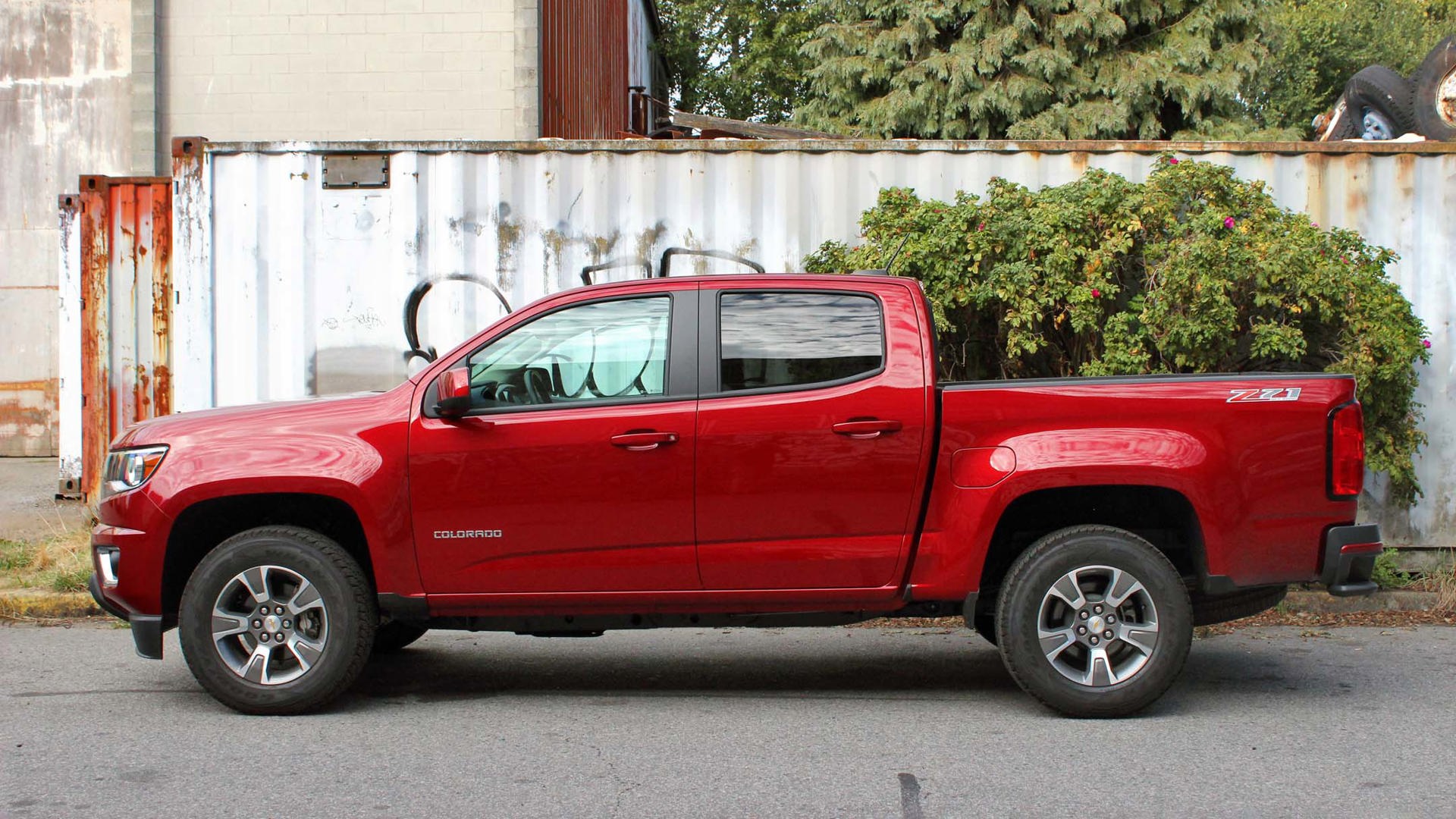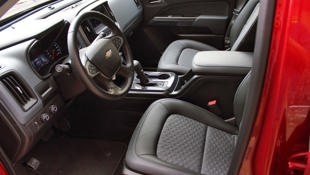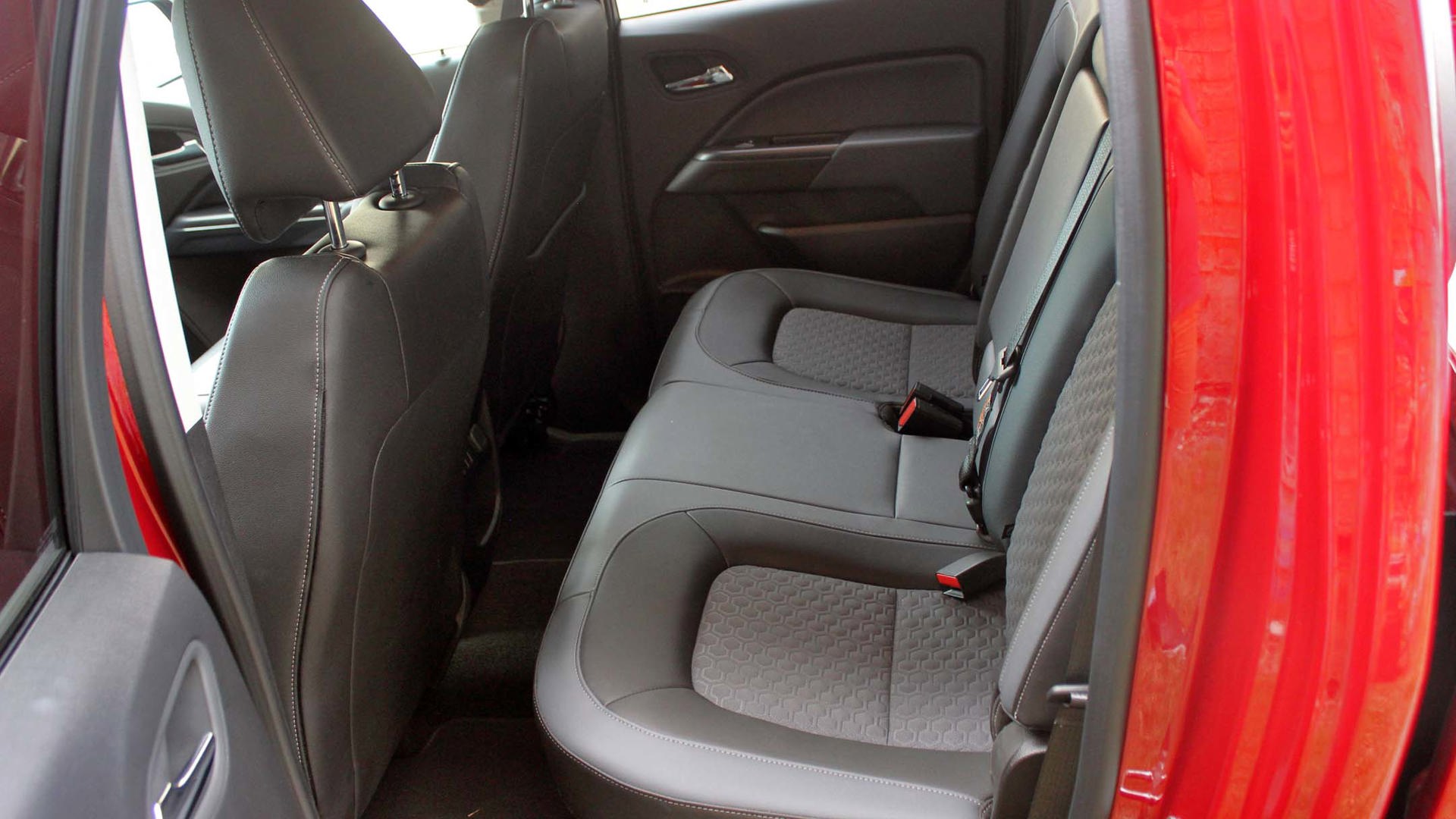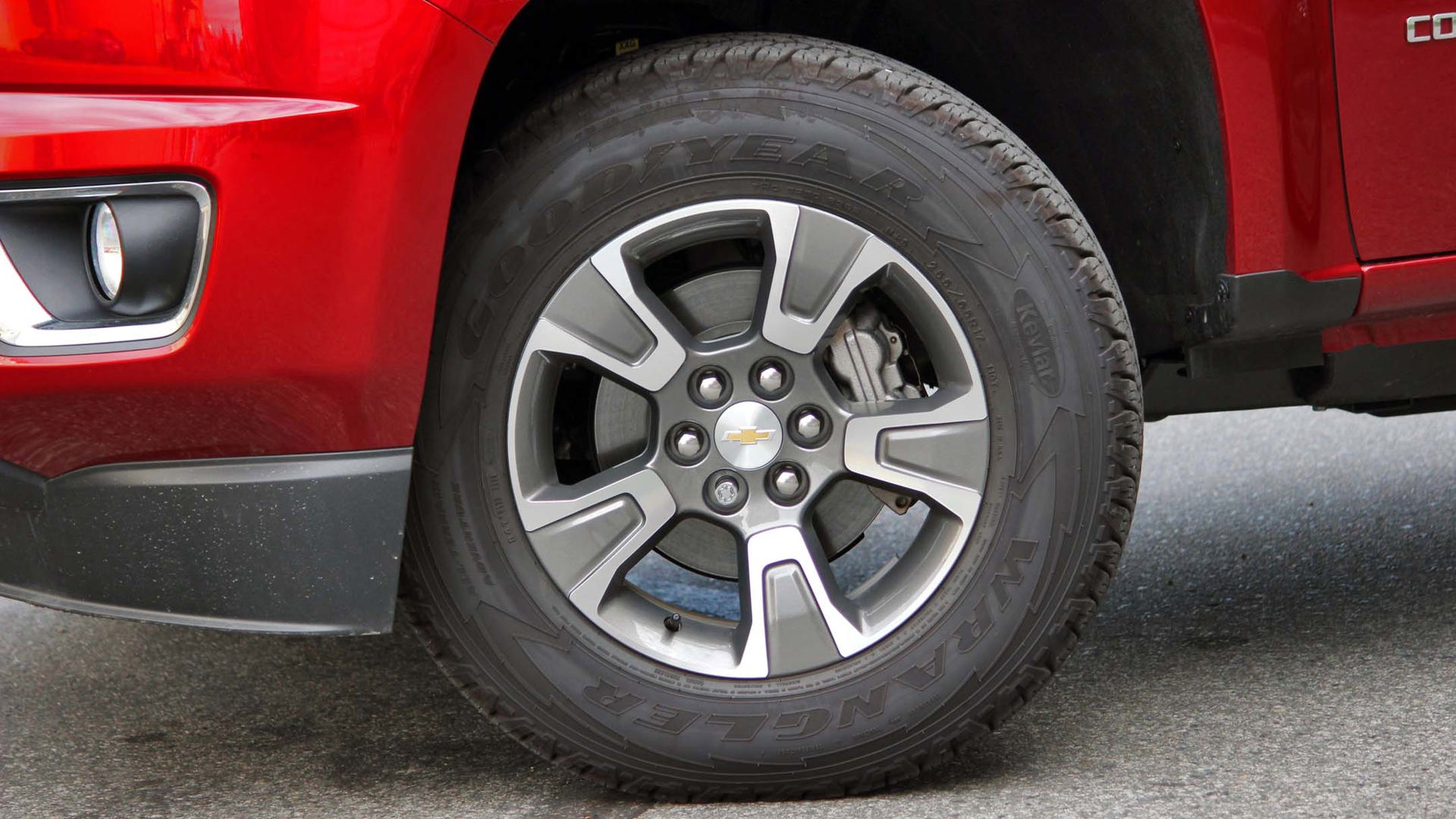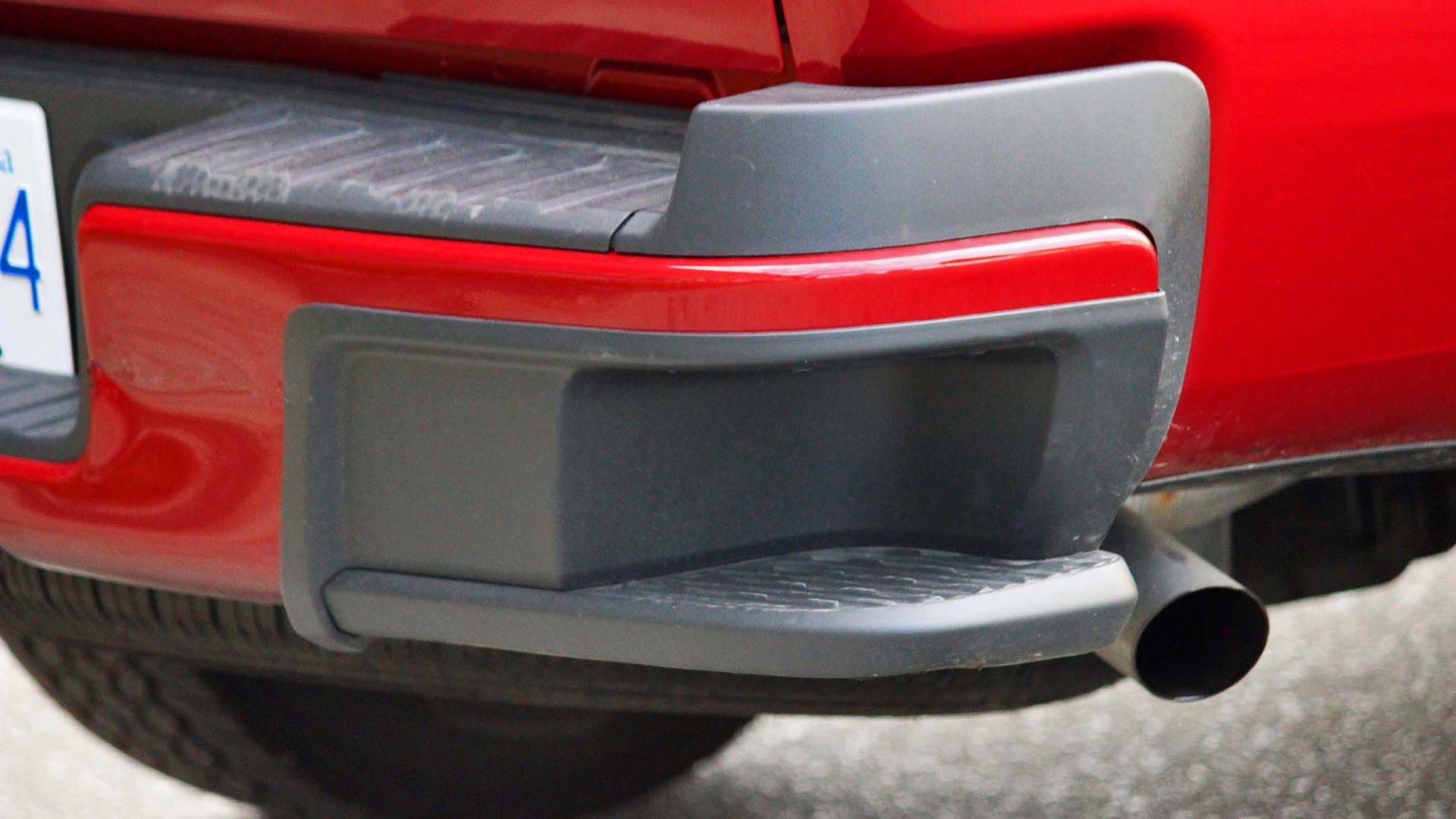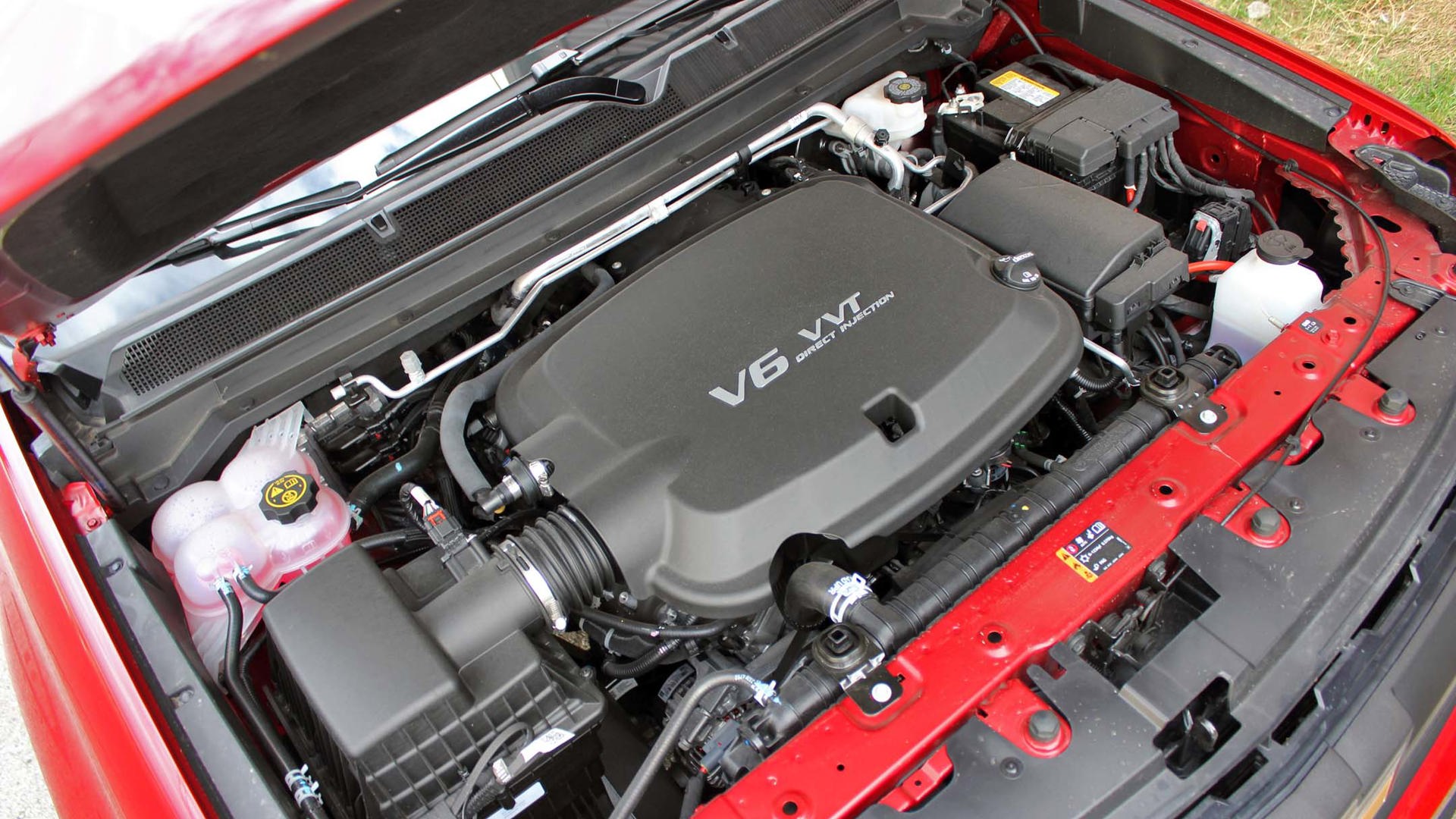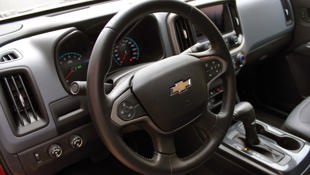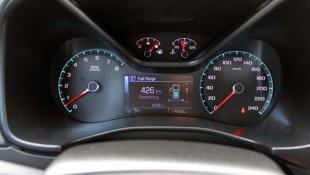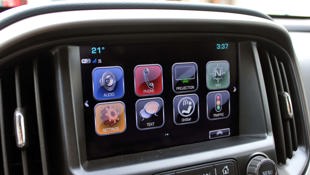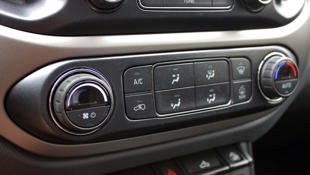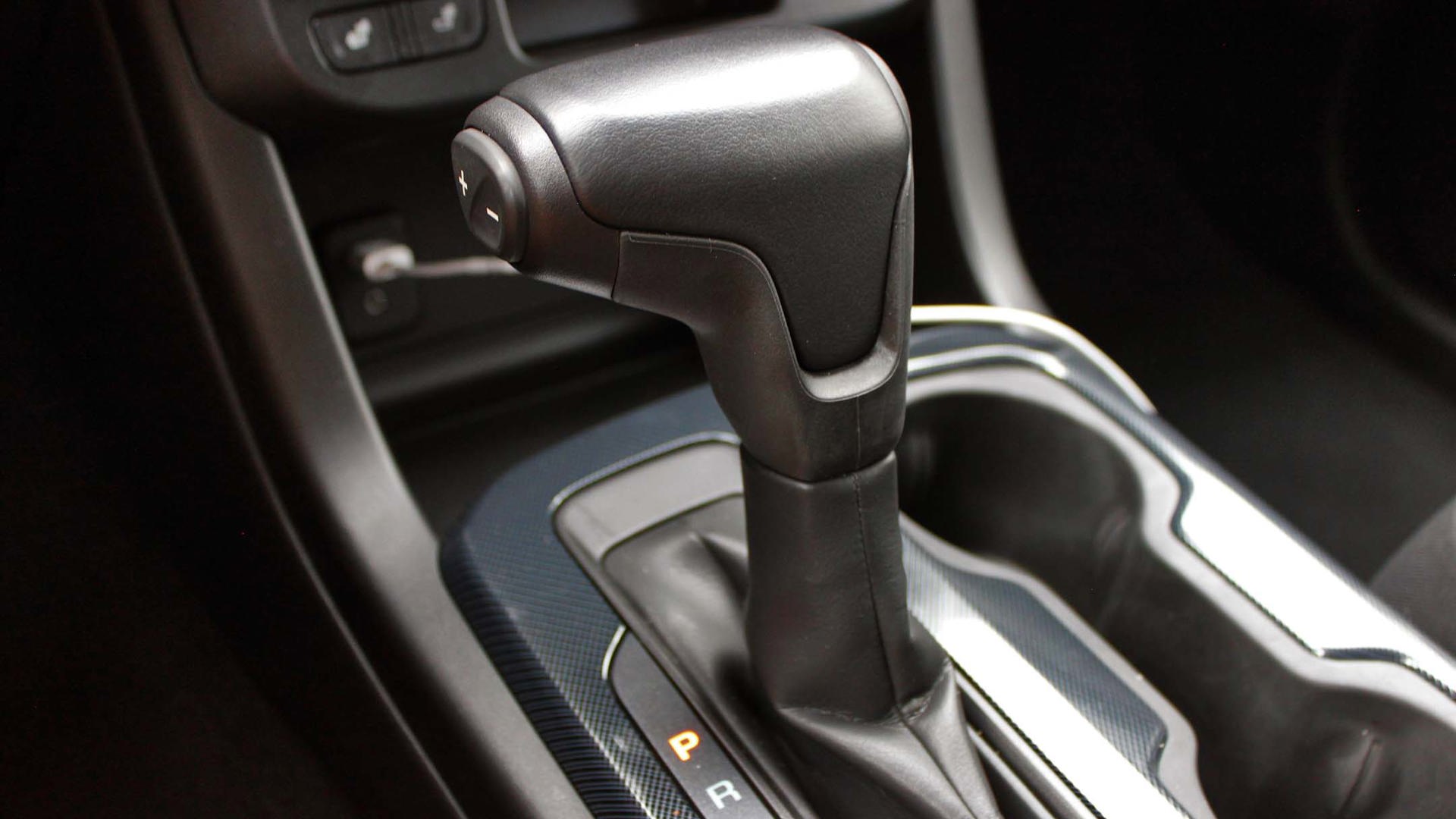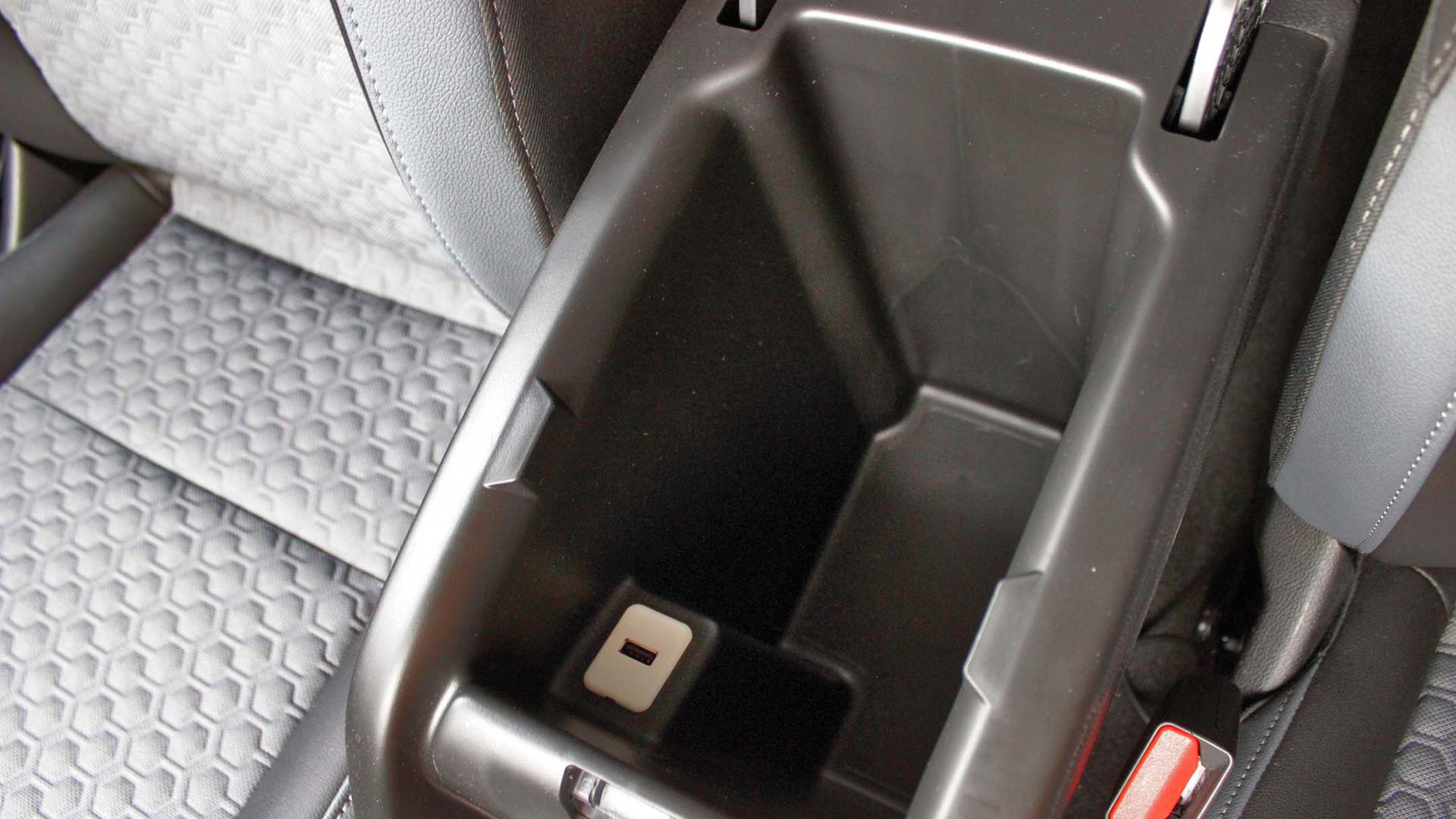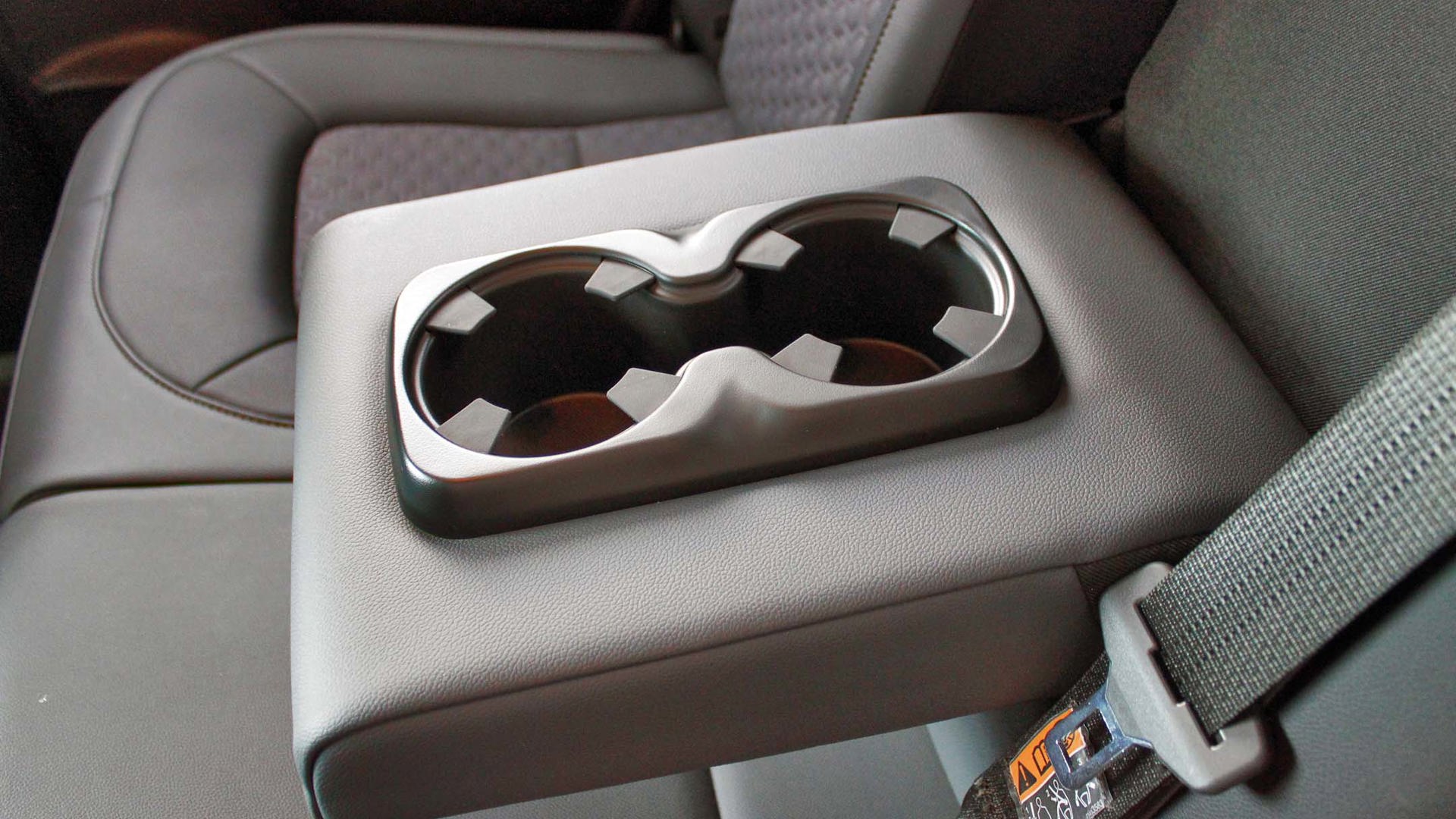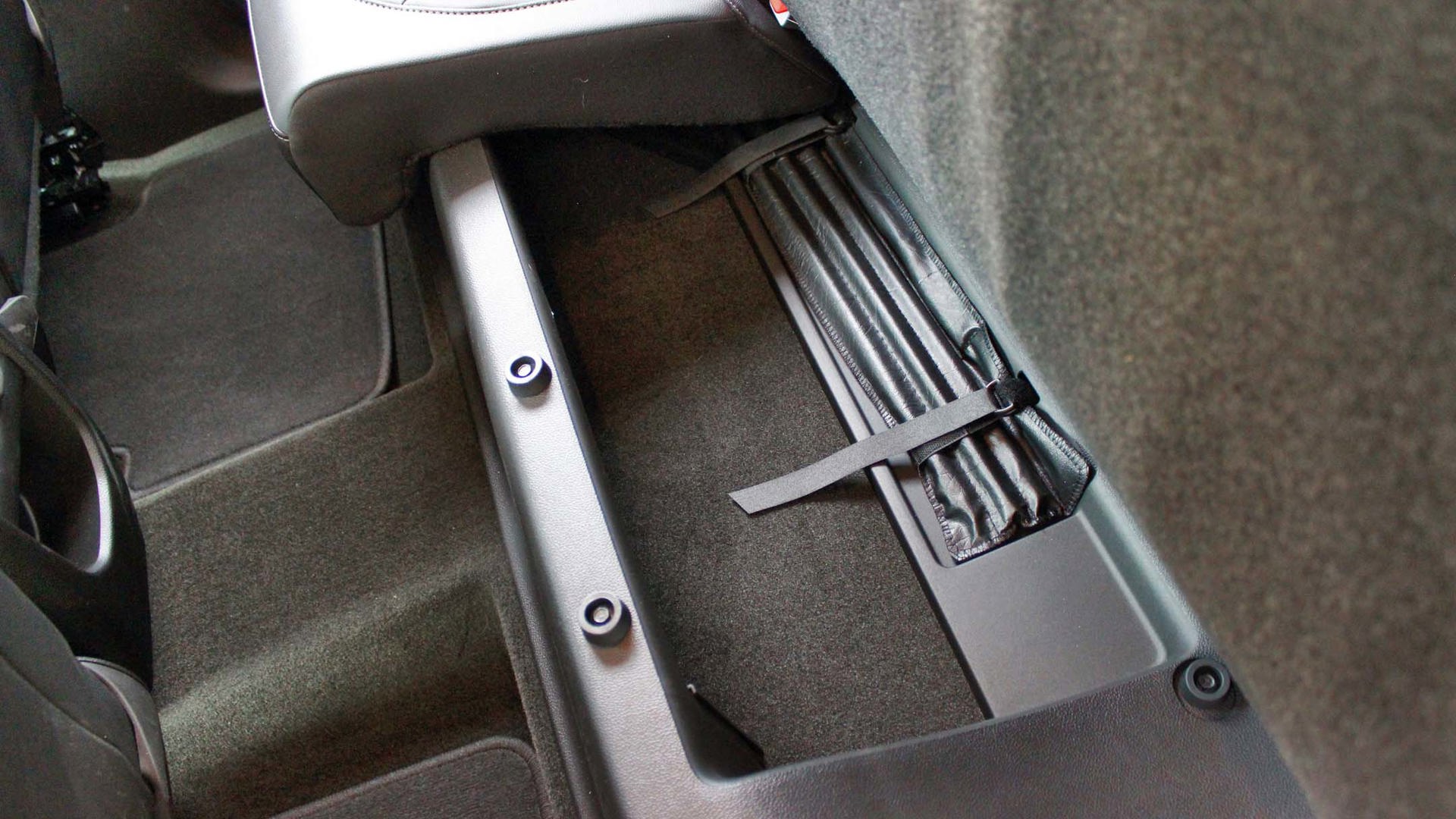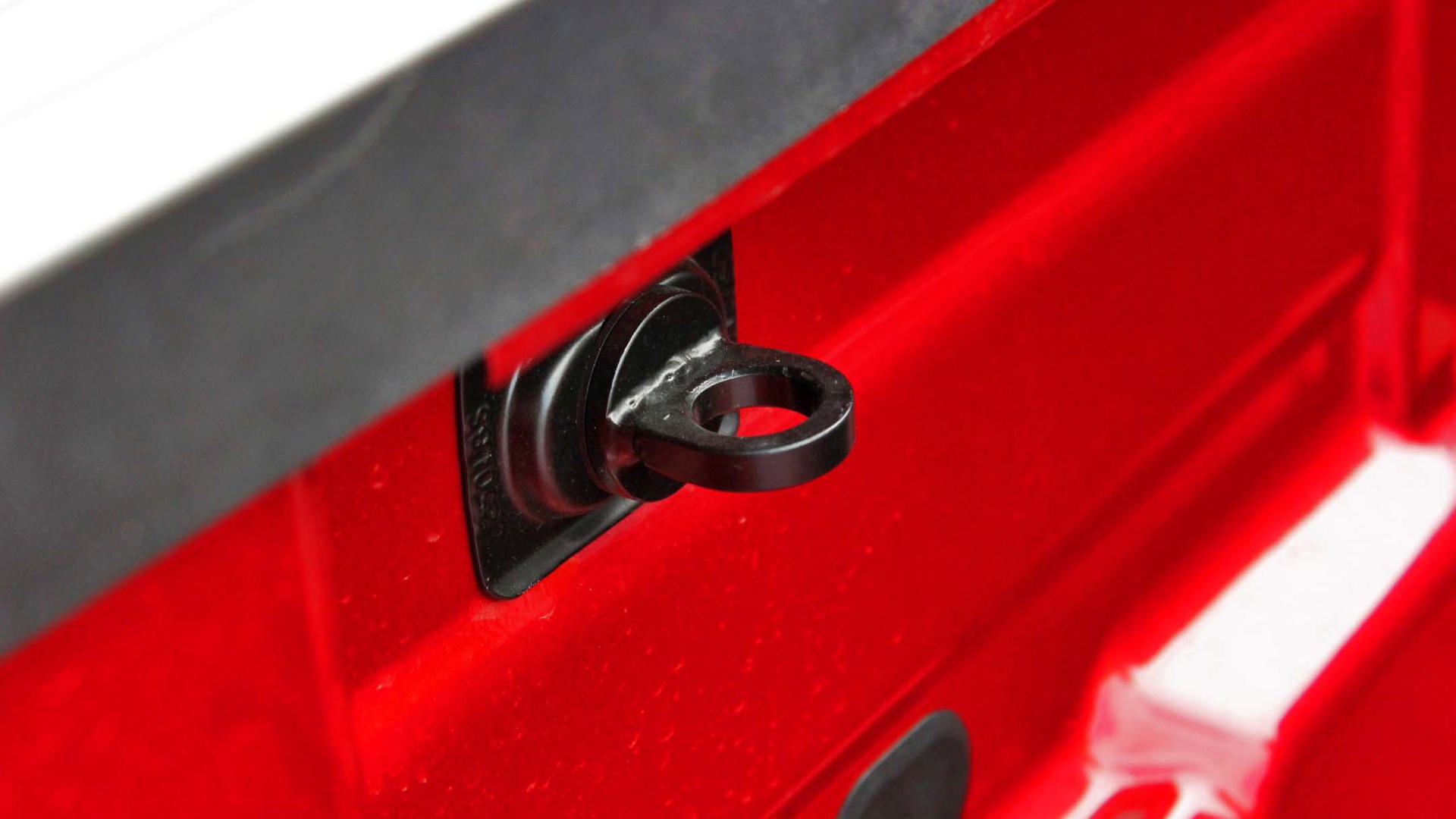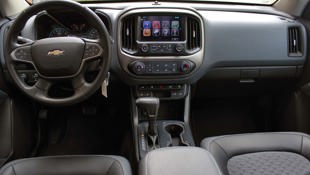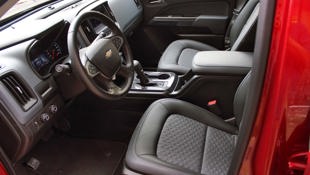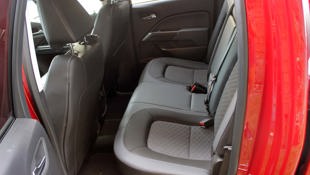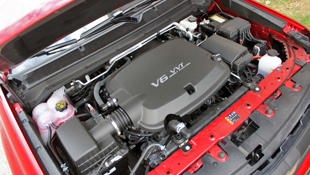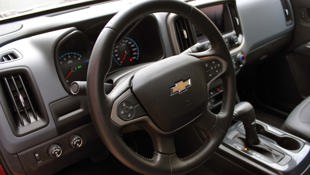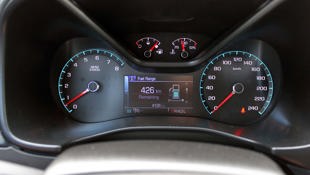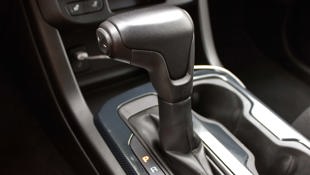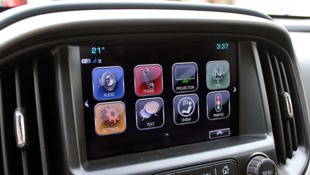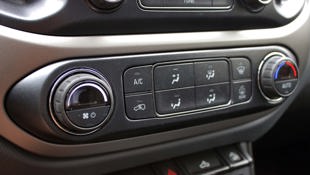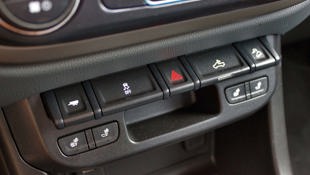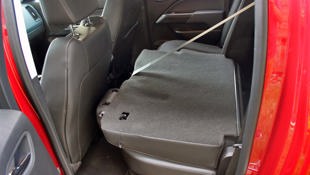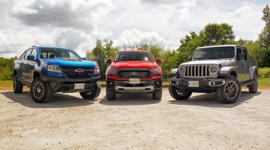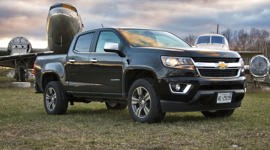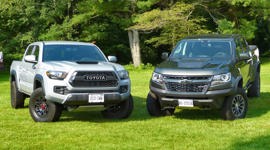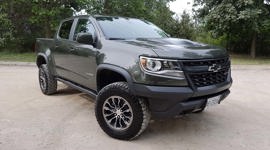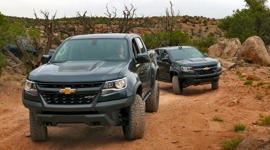 AutoTrader SCORE
AutoTrader SCORE
-
STYLING7/10
-
Safety7/10
-
PRACTICALITY7/10
-
USER-FRIENDLINESS7/10
-
FEATURES8/10
-
POWER9/10
-
COMFORT8/10
-
DRIVING FEEL7/10
-
FUEL ECONOMY7/10
-
VALUE8/10
Not sure if Mac’s convenience stores still carry magazines – they probably do, just my not being 15 anymore means I just don’t spend enough time in these places to know for sure – but back when they did, I would spend an inordinate amount of time there perusing them, to the point where I’d often get yelled at by the beleaguered proprietor to “not treat my store like a library,” etc. because of course, I’d never actually buy any of the magazines.
Hills, flats, you name it, the ’Rado can handle it.
I had my faves, the ones I’d always gravitate to first – Super Street, Sport Compact Car, Road & Track – but sometimes, since I was in the place so often – recall: I was 15 – I’d sometimes gravitate to the less well known pubs. One of these that I’ll always remember was called Mini Truckin’. There was always a pic on the cover of some Barney the Dinosaur-coloured Nissan Hardbody, a Ford Ranger on hydraulics or, perhaps most commonly, one of the Chevrolet S-10/GMC Sonoma twins, often chopped, put on airbags and given a set of bright chrome dubs. I never bought an issue, though, and it would appear I wasn’t alone in that; Mini Truckin’ is no longer what it once was, having since been swallowed up by the all-conquering The Enthusiast Network.
While the magazine’s demise and move to the online world is indicative of the direction of modern media, you have to think that another reason the magazine stopped being able to cut the mustard was the fact that, well, they just weren’t really making “mini trucks” anymore. As engines got more efficient and as lighter materials started becoming more durable and appropriate for truck use, manufacturers were finding they could make bigger trucks without a hit to the efficiency and low running costs that consumers were starting to expect not just from trucks, but from all their vehicles. Take the 2018 Ford F-150, for example; with its all-aluminum construction and choice of two V6 turbo engines, it’s a heck of a lot easier on fuel that its precursors were. Those same precursors, of course, would fight for market share with those mini trucks.
Which is where our 2017 Chevy Colorado Z71 comes in. Technically, it’s the spiritual successor to those S-10s that used to grace the Mini Truckin’ pages every month, now in its second generation. Thing is, you’d be hard-pressed to see anything “mini” at all about it, as it’s roughly the size the F-150 was when the S-10 was in production over a decade ago, whether you’ve equipped the 5.1-foot short box seen here, or the available 6.2-foot long box. Both are available with either crew or extended cabs, and rear- or four-wheel drive.
GM’s 3.6L V6 has been revised for 2017 and now provides continuously variable valve timing, direct fuel injection, and cylinder deactivation. When cruising, the V6 can drop two cylinders – indicated by a graphic between the gauges switching from “V6” to “V4”. As a result, Chevy claims the same highway fuel economy for both V6 and four-cylinder models. During our test, we saw 13.4 L/100 km in the combined cycle, and as low as 10.1 on the highway. That’s a little higher than what Chevrolet claims for highway driving, but it’s so close that it’s a bit of a split hair. That being said: we were driving in pretty ideal driving conditions, so it would be interesting to see how the Colorado performs once the going gets colder/hotter and we have to rely more heavily on the climate systems. Cylinder deactivation also reduces engine noise, so you get added comfort to go with your efficiency.
Ideal conditions or no, one thing I’m sure would remain constant is the generous power delivery from that new V6. Power is rated at 308 hp and 275 lb-ft of torque (The Duramax diesel makes 369 lb-ft, but is down almost 130 hp on the gas V6), and on our 4x4 tester, it makes its way to all four wheels via a new eight-speed – Eight! These things are going to have as many cogs as Class 8 big rigs pretty soon! – automatic transmission. While the power is already more than what’s on offer from the latest Toyota Tacoma – currently the hotter-selling of the two in Canada – you have to think that transmission plays a huge part in just how smoothly the Colorado progresses. Hills, flats, you name it, the ’Rado can handle it.
Compare that to the Tacoma, which feels positively wheezy and tractor-like by comparison. I took the Colorado on the same steep grades I did the Tacoma and while the Tacoma spent so much time hunting for gears I had to select manual mode, the Chevy just kept on truckin’. That’s a good thing, too; while the Colorado does have a manual mode, the way you switch gears by thumbing a pair of buttons on the side of the classic T-shaped shifter is not the most ergonomic of set-ups. I tried it a grand total of once, mainly for the purposes of this review. Why can’t Chevrolet (and a host of other GM brands, if we’re honest) get this right? I’d much rather be bumping the shifter fore and aft, but it is what it is.
Speaking of transmissions: previously, it was just the diesel models that received Chevrolet’s proprietary Autotrac push-button two-speed transfer case; now, all 4WD models get it, making your life when four-by-fouring that much easier. Making trailering easier, meanwhile, is the new availability of a trailer brake controller for V6 models when you’ve opted for the trailering package. Go that route, and you’ll be treated to a 3,175 kilo tow rating. The diesel, meanwhile, can tow 3,493 kilos, which is a best-in-class figure.
The more you look at those specs, the more you realize how un-“mini” this latest small-truck from Chevrolet is. The question becomes, then, does the anti-mini-ness translate to the in-cabin experience, too?
Well, yes and no.
If we’re talking strictly occupant comfort, then you’re in good hands with the Colorado. There’s plenty of space both up front and in the back in crew cab form, while the 2017 addition of heated cloth seats is a nice way to get some creature comforts without having to spend the big bucks on an all-leather interior.
Also in the “let’s gussy that interior up” mold is the addition of a new 7.0-inch infotainment display for mid-trim models, where normally just a 4.2-inch could be had. Our truck took things one step further, adding an optional 8-inch display with navigation and seven-speaker Bose audio system ($795 and $685, respectively). The infotainment interface is clear, crisp, and nicely aligned though I would’ve liked some slightly less muddy graphics for the nav system. There’s also support for Apple CarPlay and Android Auto and while these are nice features to have, I found CarPlay to be less than fully realized. Hooking up was okay, but for some inexplicable reason, only a certain portion of my various menus could be displayed, even while scrolling.
Take, for example, my Google Play Music app. Now, a cynic may say Play Music is problematic in an Apple-based system because Apple is the root of all evil and selfish and they only want their apps to work properly, but I’ve had no problem with Play Music in any of the other cars with the feature that I’ve tested. Here, though, I could only scroll through a small portion of my playlists, no matter how many times I spun that wheel. Odd. At least it sounds mighty fine once you do get it going.
Also new for 2017 is the standard fitment of GM’s Teen Driver feature. Essentially, it provides parents with the ability to track what their kids are doing when behind the wheel as it tracks speeds, distance driven, and how often driver aids like emergency auto-braking and lane-departure warning are activated on a given trip. It’s testament to the Colorado being used as an everyday vehicle to be used by multiple family members.
So the creature comfort aspects are there, but as far as interior practicality goes, the Colorado takes a bit of an, ahem, back seat to the competition. My main sticking point is the rear portion of the cabin. It’s great for passengers, sure, but once it’s time – and this time will come for most any truck owner – to start storing and hauling stuff back there, it becomes a little bit of a chore.
For starters, the floor is nowhere near flat and the flat areas you do get are so small you’ll barely be able to fit a medium-sized cooler back there. Secondly, the storage bin that gets exposed when you flip the bottom seat cushions is oddly shaped and frustratingly shallow so while you can’t fit a medium-sized cooler on the floor, you’ll be hard-pressed to fit a medium-sized toolbox under the seats.
The pickup bed itself, on the other hand, is a fine piece of equipment that gets Chevy’s oh-so-simple yet oh-so-perfect “Cornerstep” bumpers. Forget the hydraulic step deployed by an F-150 (that requires the additional step of deploying a hand-hold); just cut out chunks from the bumper big enough for a CSA-approved steel-toed work boot and Bob’s your uncle. You may not get quite the surface area you do from Ford’s system, but it’s enough for most any application. Add a nicely damped tailgate and you’ve got the perfect recipe for an inner-city work truck, as well as a 2,722 kg cargo rating.
In addition to that function, however, what I like is that you can use the Colorado as an everyday vehicle if you choose, too. Its size, the creature comforts we talked about, and its modern styling look just as at home in the urban jungle as it does on the work site (especially in the new “Cajun Red Metallic” paint seen here. That joins Graphite Metallic as the two new colours for 2017). In talks with GM around the reveal of this latest Colorado back in 2011–2012, I recall a lot of talk of the pickup becoming a “lifestyle” vehicle and a viable alternative to SUVs and crossovers. While I’d like to see how many consumers interested in those segments have actually migrated, this particular example should provide some fine incentive as it’s a fine piece of engineering from Chevrolet. It’s a good jumping off point and with Ford bringing their Ranger back to Canada in just over a year’s time, we may see a little more Mini Truckin’ yet.
| Engine Displacement | 3.6 L |
|---|---|
| Engine Cylinders | 6 |
| Peak Horsepower | 308 hp @ 6,800 rpm |
| Peak Torque | 275 lb-ft @ 4,000 rpm |
| Fuel Economy | 13.8/9.8/12.4 L/100 km cty/hwy/cmb |
| Cargo Space | 5.1 ft box |
| Model Tested | 2017 Chevrolet Colorado Z71 4WD Crew Cab Short Box |
| Base Price | $38,870 |
| A/C Tax | $100 |
| Destination Fee | $1,700 |
| Price as Tested | $43,055 |
|
Optional Equipment
$2,385 – Cajun Red Metallic paint $595; Chevrolet MyLink radio with navigation (navigation, 8.0-inch touchscreen display) $795; Cargo area lamps $310; Premium Bose Audio $685
|
|
